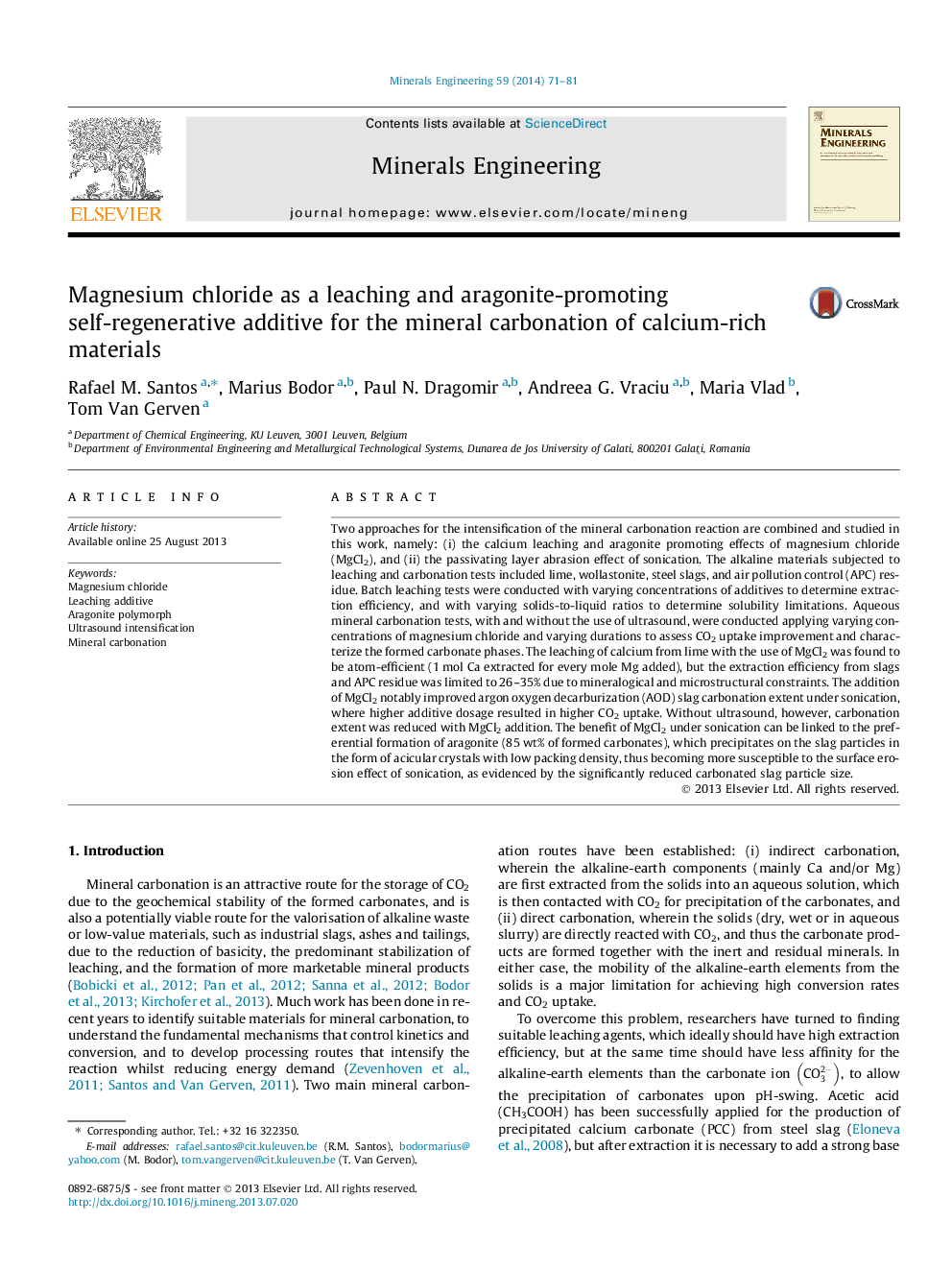| Article ID | Journal | Published Year | Pages | File Type |
|---|---|---|---|---|
| 233331 | Minerals Engineering | 2014 | 11 Pages |
•Efficacy of three chloride-based leaching agents (MgCl2, NaCl and HCl) is compared.•Brucite precipitation/dissolution regulates the self-regenerative cycle of MgCl2.•MgCl2 leaching of lime is atom-efficient, but is limited (⩽35%) for other minerals.•MgCl2 improves AOD slag carbonation extent (up to +110%), but only under sonication.•Carbonation enhancement is linked to preferential formation of acicular aragonite.
Two approaches for the intensification of the mineral carbonation reaction are combined and studied in this work, namely: (i) the calcium leaching and aragonite promoting effects of magnesium chloride (MgCl2), and (ii) the passivating layer abrasion effect of sonication. The alkaline materials subjected to leaching and carbonation tests included lime, wollastonite, steel slags, and air pollution control (APC) residue. Batch leaching tests were conducted with varying concentrations of additives to determine extraction efficiency, and with varying solids-to-liquid ratios to determine solubility limitations. Aqueous mineral carbonation tests, with and without the use of ultrasound, were conducted applying varying concentrations of magnesium chloride and varying durations to assess CO2 uptake improvement and characterize the formed carbonate phases. The leaching of calcium from lime with the use of MgCl2 was found to be atom-efficient (1 mol Ca extracted for every mole Mg added), but the extraction efficiency from slags and APC residue was limited to 26–35% due to mineralogical and microstructural constraints. The addition of MgCl2 notably improved argon oxygen decarburization (AOD) slag carbonation extent under sonication, where higher additive dosage resulted in higher CO2 uptake. Without ultrasound, however, carbonation extent was reduced with MgCl2 addition. The benefit of MgCl2 under sonication can be linked to the preferential formation of aragonite (85 wt% of formed carbonates), which precipitates on the slag particles in the form of acicular crystals with low packing density, thus becoming more susceptible to the surface erosion effect of sonication, as evidenced by the significantly reduced carbonated slag particle size.
